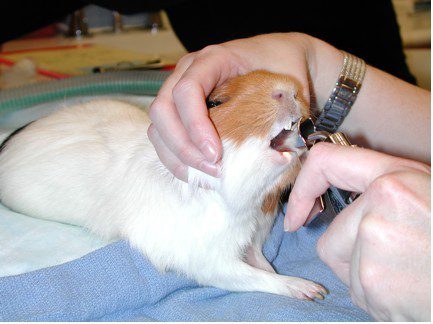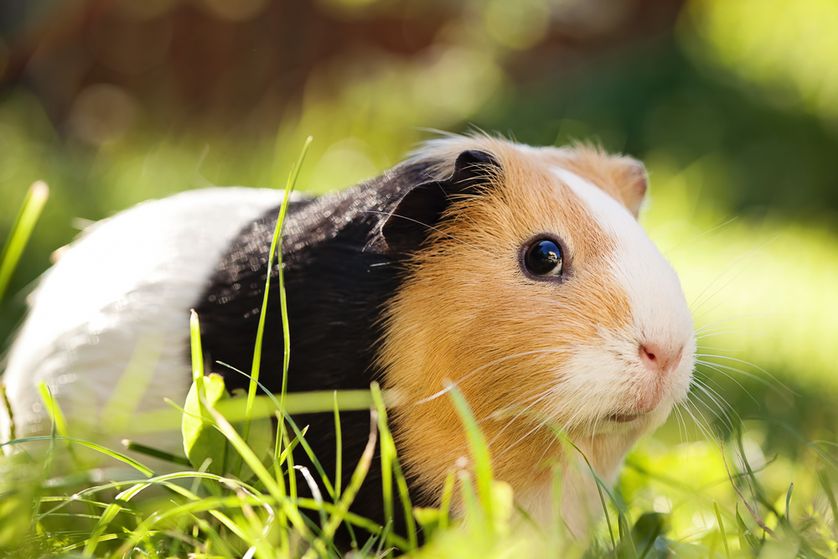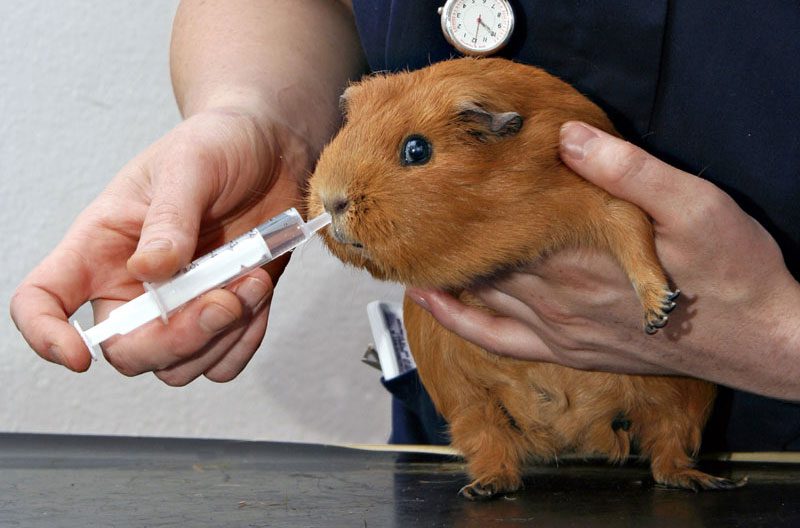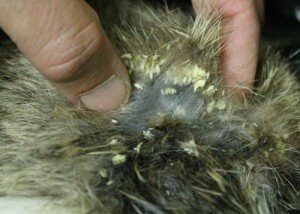
Examination of guinea pigs
Guinea pig examination should be carried out every six months for preventive purposes. But, if you notice changes in your pet’s behavior, you should immediately contact your veterinarian. In this article, we will consider what tests and how are they done during the examination? How can you prepare and what can you do yourself? What procedures are better to entrust to the veterinarian?

Contents
How to take a guinea pig urine sample
Urine can be obtained by placing a guinea pig on a bed with a plastic bag (crumpled). Usually 1 hour is enough to collect enough urine for analysis.
How is guinea pig stool analyzed?
This study is most often only necessary when you are starting a new guinea pig or when you have a large group of animals that change frequently. If you have one pet, fecal analysis is extremely rare. Feces need to be collected after the morning feeding of the pet. Before this, the cage must be washed and the bedding removed. Collect feces with tweezers and place in a clean plastic container.
Fecal analysis is carried out in two ways.
1. Using the enrichment method using a saturated sodium chloride solution (specific gravity – 1,2). 2 grams of litter is well mixed in a glass (100 ml) with a small amount of sodium chloride solution (saturated). Then the glass is filled with a solution of table salt, and the contents are stirred until smooth. After another 5 minutes, a coverslip is carefully laid out on the surface of the solution, on which floating eggs of parasites will settle. After another 1 hour, the cover glass is taken out and examined with a microscope (10-40x magnification).2. Parasitological study using the sedimentation method. 5 grams of manure is stirred in a glass of water (100 ml) until a homogeneous suspension is formed, which is then filtered through a sieve. A few drops of washing liquid are added to the filtrate, which is then settled for 1 hour. The top layer of liquid is discarded and the beaker is refilled with water and wash liquid. Another 1 hour later, the water is drained off again, and the precipitate is thoroughly mixed with a glass rod. Then a few drops of the precipitate are placed on a glass slide, stained with a drop of methylene blue solution (1%). The resulting result is examined under a 10x magnification microscope without a cover slip. Methylene blue will turn plants and dirt blue-black, and parasite eggs yellow-brown.
How to take a guinea pig blood test
This procedure should be carried out only by a specialist! The foot of the guinea pig is pulled over the elbow with a tourniquet, and then the limb of the animal is pulled forward. If necessary, the hair over the vein is trimmed. The injection area is disinfected with a swab dipped in alcohol, and then a needle (number 16) is carefully inserted.
If only 1 drop of blood is required, then it is taken directly from the skin, simply by puncturing a vein.
Guinea pig skin examination
Sometimes guinea pigs suffer from ticks. You can find out if this is so by doing a skin scraping. A small area of skin is scraped off with a scalpel blade until droplets of blood appear. The skin particles are then placed on a glass slide, a 10% potassium hydroxide solution is added and examined under a microscope (2x magnification) 10 hours later. Another common skin problem is fungal infections. Accurate diagnosis is possible in the mycological laboratory. You can buy a test, but it does not provide a sufficient degree of reliability.
anesthesia for guinea pig
Anesthesia can be injectable (the drug is administered intramuscularly) or inhaled (a gauze bandage is used). However, in the second case, it is necessary to ensure that the gauze does not touch the nose, as the solution can damage the mucous membrane. Before applying anesthesia, the guinea pig should not be given food for 12 hours. If you use hay as bedding, it is also removed. A few days before anesthesia, the guinea pig is given vitamin C diluted in water (1 – 2 mg / ml). When a guinea pig wakes up from anesthesia, it is sensitive to a decrease in temperature. Therefore, the animal is placed on a heating pad or placed under an infrared lamp. It is important to maintain body temperature at 39 degrees until full awakening.
How to give medicine to a guinea pig
Sometimes it is quite difficult to give a guinea pig medicine. You can use a special spatula that is inserted horizontally into the mouth behind the incisors so that it comes out on the other side and then rotate it 90 degrees. The animal itself will squeeze it with its teeth. A hole is made in the spatula through which the medicine is injected using a probe. It is important to inject the medicine carefully and slowly, otherwise the guinea pig may choke.






